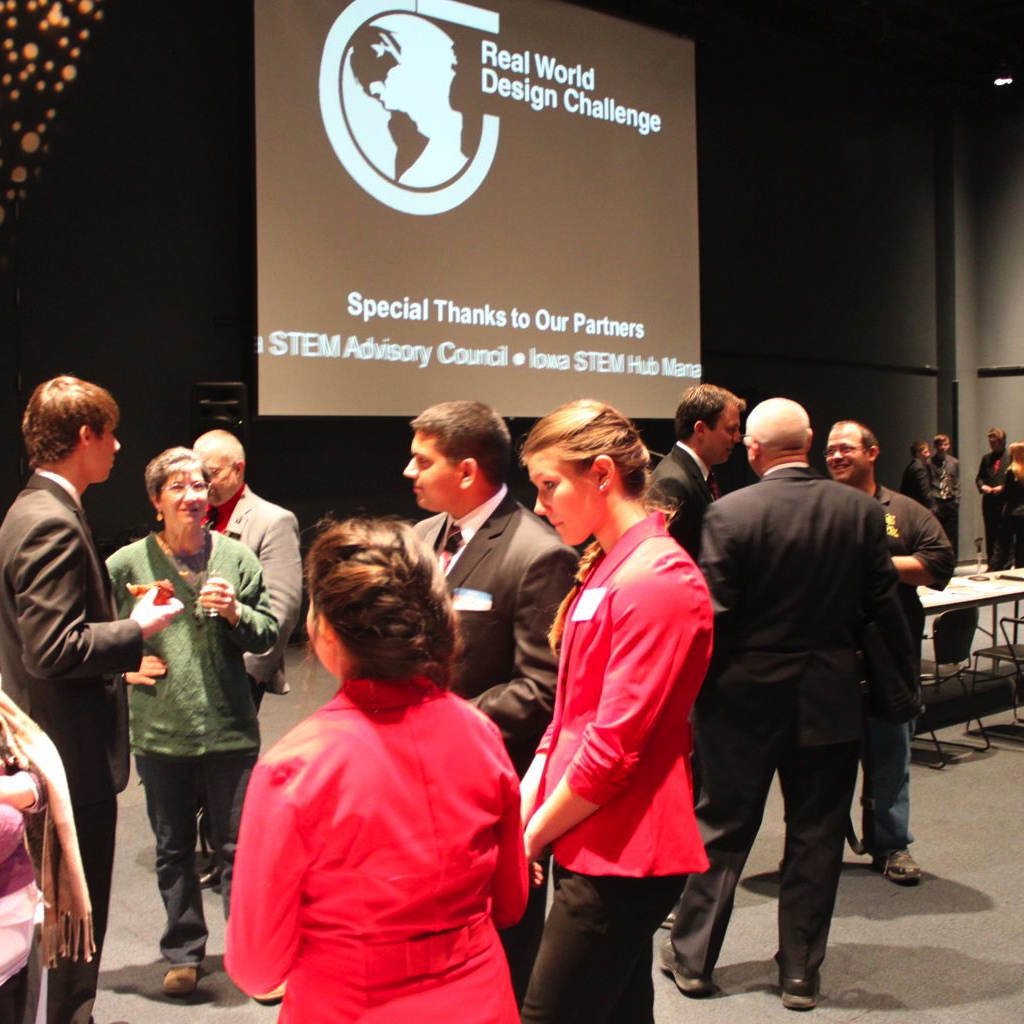A program for high school students to create solutions for problems engineers currently face in the workforce is gaining momentum in its third year at Iowa State. The Real World Design Challenge (RWDC) doubled in size just from last year, with 10 students involved in the program, but more than 30 have volunteered to mentor high school students. And the numbers are still growing.
“One of the largest gaps in the educational pipeline, especially for engineering, is between high school and higher education,” said Peggy Boylan-Ashraf, senior lecturer of aerospace engineering. “One of the most effective ways to introduce young students to engineering is to match them with caring mentors in related fields.”
Boylan-Ashraf said the program is growing “tremendously in size and effectiveness.” The groups of eager students volunteering to be mentors each year also share Boylan-Ashraf’s enthusiasm for the program, especially those who return with experience.
Alexander Richardson, a junior in aerospace engineering, has been a peer mentor since Iowa State started the program, and John Goorsky, a sophomore in aerospace engineering, is a new mentor.
Richardson and Goorsky spend a couple of hours each week responding to the team’s emails and questions. They also help them finalize the design, presentation, and technical report through Skype.
Since Richardson has been involved before, he knows about past presentations and what the judges are looking for in a winner.
“I think it helps the high school students to have a mentor who has seen the challenge and can help them through the process,” said Richardson.
Boylan-Ashraf said she is impressed with the mentors involved in RWCD at Iowa State. “These mentors are the best of the best because they are the most giving,” she said. “They are dedicating themselves to the betterment of other people.”
Goorsky appreciates the benefits of pairing college mentors with high school students. “It’s a great leadership opportunity and it gives you experience working on a team,” he said. “It also gives us different looks at problem solving.”
An added benefit for the high school students is that they are able to build networks through their college mentors and learn more about college life, said Richardson. But the high school students aren’t the only ones benefitting from the program.
“Helping the high school students solidifies the processes learned in our coursework,” Richardson added. “And it provides leadership experience that can be added to my résumé.”
In April, Richardson and Goorsky will travel to the national championship competition in Washington, D.C. with a group from Davenport West High School, the winners of the Governor’s Cup challenge held in January. Davenport West also advanced to the national competition last year.
